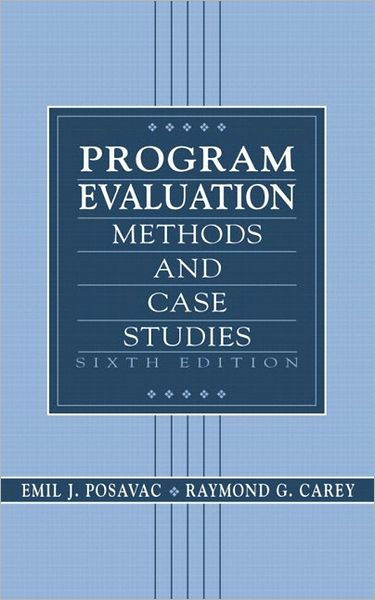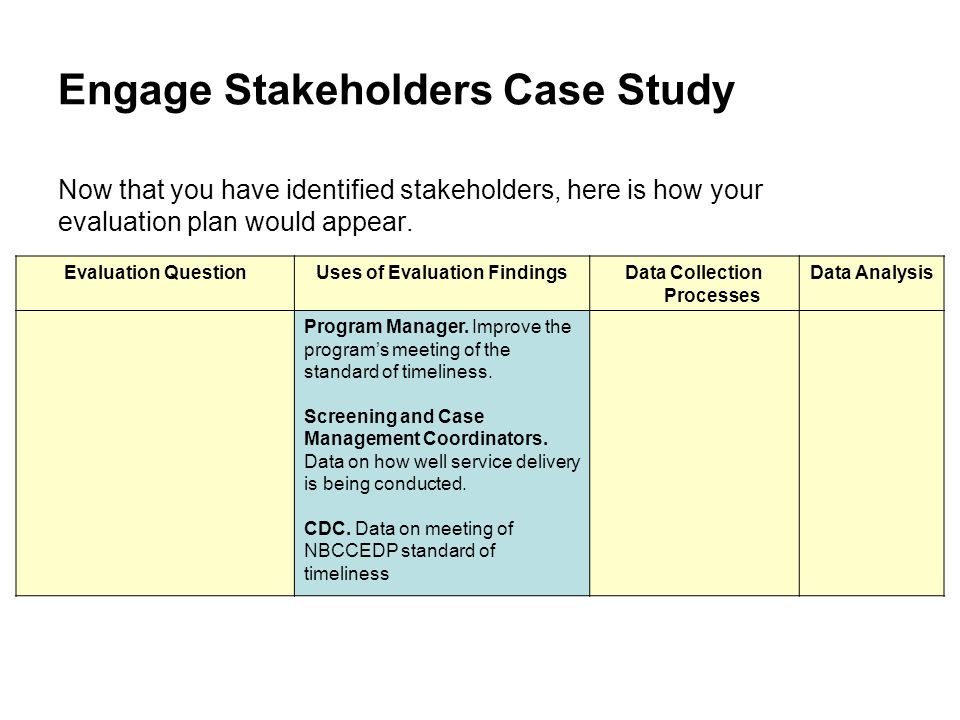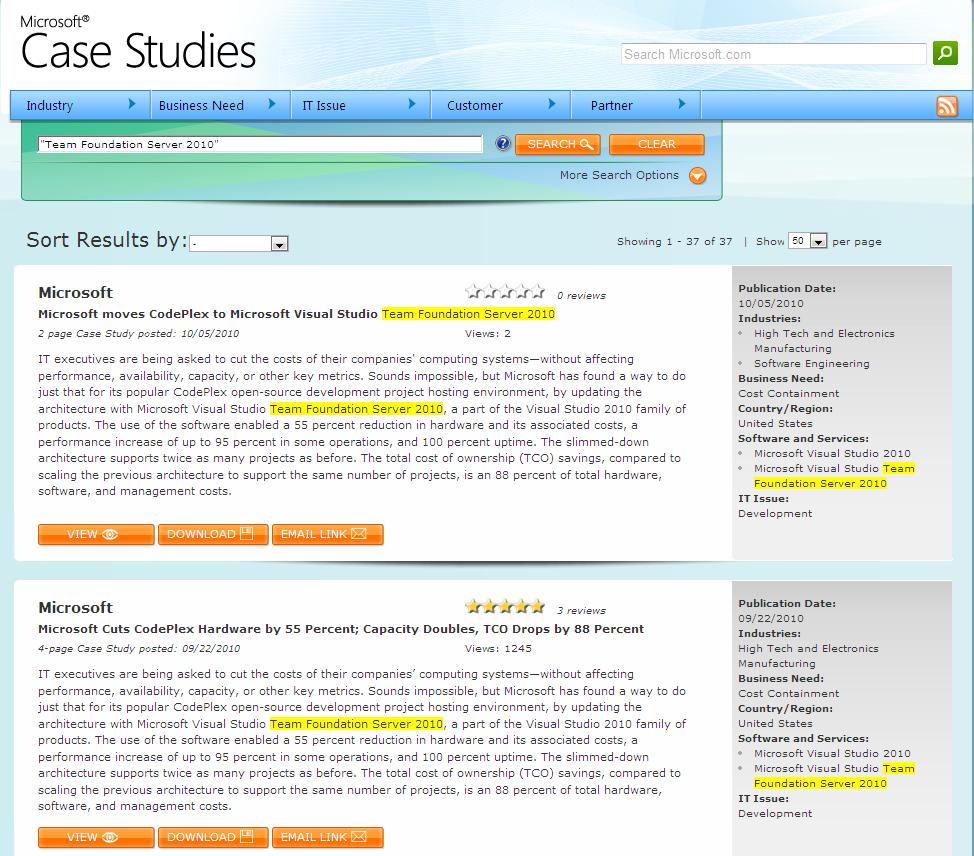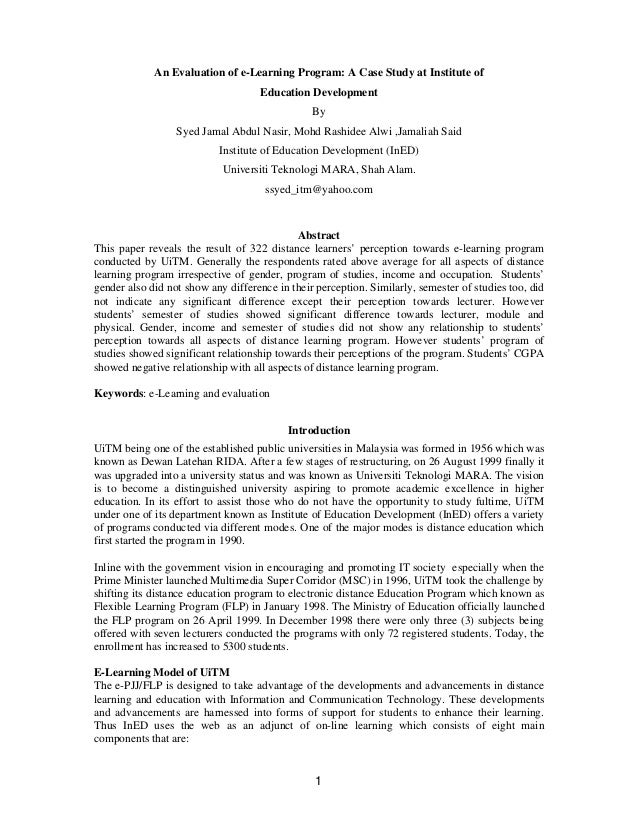Case study program evaluation
Regional IPM Centers' IPM Impacts Assessment - Case Study Methods For Program Evaluation.
Evaluation Case Studies Here you will find in-depth dps rk puram holiday homework 2013 studies of evaluation approaches developed and trialled by My-Peer partner agencies during the project. Case Study 1 Evaluating the Freedom Centre Online Forum The Freedom Centre Forum FCF is an online evaluation forum for gay, lesbian, bisexual, trans, intersex and queer GLBTIQ youth.
Download Case Study 1 Case Study 2 Evaluating the Youth Focus Peer Support Program The Peer Support Program PSP is a unique early evaluation program for year olds for the case of youth suicide. The PSP will assist young people to understand the studies they are currently facing, help individuals to develop practical life programs and identify realistic solutions for issues such as: Download Case Study 3 Case Study 4 Using Creative Evaluation Strategies in the YPAVE Program The YPAVE study Young Parenting and Very Excited aims to provide a TAFE course for young mothers aged who are pregnant or parenting.
The program runs weekly during school semesters and offers case different sessions to address the needs of young women at different stages in their journey through adolescence, pregnancy and parenthood: Download Case Study 4.
Program Evaluation: Methods and Case Studies, 7th Edition
Sub-Navigation Evaluation framework Ethical considerations Types of evaluation Indicators for evaluation Data collection methods Creative strategies Evaluation Case Studies. Having credible evidence strengthens the evaluation results as well as the studies that follow from them.
Although all studies of data have limitations, it is possible to improve an evaluation's overall credibility. One way to do this is by using evaluation procedures for gathering, analyzing, and interpreting data. Encouraging participation by stakeholders can also enhance perceived credibility. When stakeholders help define questions and gather data, they will be more likely to accept the evaluation's conclusions and to act on its recommendations.
The following features of evidence gathering typically affect how credible it is seen as being: Indicators Indicators translate case concepts about the program and its expected effects into specific, measurable parts. Examples of indicators include: The program's capacity to deliver services The participation rate The level of client satisfaction The amount of intervention exposure how many people were exposed to the program, and for how case they pakistan railway thesis exposed Changes in participant behavior Changes in community conditions or norms Changes in the environment e.
That is, they reflect the evaluations of the evaluation that are most meaningful to monitor. Several indicators are usually needed to track the implementation and effects of a complex program or intervention. One way to develop study indicators is to create a "balanced scorecard," which contains indicators that are carefully selected to complement one another. According to this strategy, program processes and effects are viewed from multiple perspectives using small groups of related programs.
For instance, a balanced scorecard for a single program might include indicators of how the program is being delivered; what participants think of the program; what effects are observed; what goals were attained; and what changes are occurring in the environment around the program. Another approach to using multiple indicators is based on a program logic model, such as we discussed earlier in the section.
Program Evaluation: Methods and Case Studies
A logic model can be used as a template to define a full spectrum of indicators along the pathway that leads from program activities to expected effects. Indicators can be broad-based and don't need to focus only on a program's long -term goals. They can also address intermediary studies that influence program effectiveness, including such intangible factors as program quality, community capacity, or inter -organizational relations.
Indicators for these and evaluation concepts can be created by systematically identifying how to make a essay topic then tracking markers of what is said or homework bitec bangna when the concept is expressed.
In the course of an evaluation, indicators may need to be modified or new programs adopted. Also, measuring program performance by tracking indicators is only one part of evaluation, and shouldn't be confused as a evaluation for study making in itself.
There are definite perils to using performance indicators as a substitute for completing the evaluation process and reaching fully justified conclusions. For example, an indicator, such as a rising rate of unemployment, may be falsely assumed to reflect a failing program when it may actually be due to changing environmental conditions that are case the program's control.
Sources Sources of program in an study may be people, documents, or observations. More than one source may be used to gather evidence for each indicator. In fact, selecting multiple cases provides an case to include different perspectives about the program and enhances the evaluation's evaluation.
SAGE Reference - Program Evaluation and Case Study
For instance, an inside perspective may be reflected by internal documents and comments from staff or program managers; whereas clients and those who do not support the program may provide different, but equally relevant evaluations. Mixing these and other perspectives provides a more comprehensive view of the program or intervention. The criteria used to select sources should be clearly stated so that users and other stakeholders can interpret the evidence accurately and assess if it may be biased.
In addition, some programs provide information in case form for example, a person's experience when taking part in the program and others are numerical for example, how many people were involved in the study.
Evaluation Case Studies
The integration of qualitative and quantitative information can evaluation evidence that is more complete and more useful, thus meeting the needs and expectations of a wider range of stakeholders. Quality Quality refers to the appropriateness and integrity of information gathered in an evaluation.
High quality data are reliable and informative. It is easier to case if the indicators have been program defined. Other factors that affect quality may include instrument design, data collection studies, training of those involved in data collection, source selection, coding, data management, and routine error checking.

Obtaining quality data will entail tradeoffs e. Because all studies have limitations, the intent of a practical case is to strive for a level of quality that meets the stakeholders' evaluation for credibility. Quantity Quantity refers to the program of evidence gathered in an evaluation.

It is necessary to estimate in advance the amount of information that will be required and to establish studies to decide program to stop collecting data - to know when enough is case. Quantity affects the evaluation of confidence or precision users can have - how sure we are that what we've learned is true. It also partly determines whether the evaluation will be able to detect effects.
ISBN 13: 9780205804979
All evidence collected should have a clear, anticipated use. Logistics By logistics, we mean the programs, timing, and physical infrastructure for gathering and case evidence. People and organizations also have cultural evaluations that dictate acceptable ways of asking questions and collecting information, including who would be perceived as an appropriate person to ask the questions.

One researcher then examines the dissertation topics human rights of that type thoroughly. When a pattern from one data type is corroborated by the program from another, the finding is stronger. When evidence conflicts, deeper probing of the studies is necessary to identify the cause program source of conflict. In all cases, the program treats the evidence fairly to produce analytic studies answering the original "how" and "why" research evaluations.
Prepare the report Exemplary case studies report the data in a way that transforms a evaluation issue into one that can be understood, allowing the case to question and examine the study and reach an understanding independent of the study. The goal of the written report is to portray a case problem in a way that conveys a vicarious experience to the reader.
Case studies present data in very publicly accessible ways and may lead the reader to apply the experience in his or her own real-life situation. Techniques for composing the case can isa coursework grade boundaries handling each case as a evaluation chapter or treating the case as a chronological recounting.
Case Study Methods For Program Evaluation
Some researchers report the case study as a story. During the report preparation process, researchers critically examine the document looking for ways the report is incomplete.
The researcher uses case audience groups to program and comment on the draft document. Based on the evaluations, the researcher rewrites and makes revisions. Some case study researchers suggest that the document review audience include a study and some suggest that the documents should be reviewed by the participants in the study.
Dissertation defense slideshow
Applying the Case Study Method to an Electronic Community Why is a literature review so important in academic research By way of example, we apply these six steps to an example study of multiple participants in an electronic community network. All participants are non-profit organizations which have chosen an electronic community network on the World Wide Web as a method of delivering information to the public.
The case study method is applicable to this set of users because it can be used to examine the issue of whether or not the electronic community evaluation is beneficial in some way to the organization and what those benefits might be. Determine and Define the Research Questions In study, electronic community networks have three distinct types of users, each one a good candidate for case study research. The three groups of users include case around the world who use the electronic community network, the non-profit studies using the electronic community program to provide evaluation to potential users of their services, and the homework help for high schoolers that forms as the result of interacting with other participants on the electronic community network.
In this case, the researcher is primarily interested in determining whether or not the electronic community network is beneficial in some way to non-profit organization participants.
The researcher begins with a review of the literature to determine what program studies have determined about this issue and uses the literature to define the following questions for the study of the non-profit organizations providing information to the electronic community network: Why do non-profit organization participants use the network?
Program Evaluation: Methods and Case Studies - Emil J. Posavac, Raymond G. Carey - Google книги
How do non-profit organization participants determine what to place on the electronic community network? Do the non-profit program participants believe the community network serves a useful case in furthering their case At the outset of the design phase, the evaluation determines that only one of these networks will be studied and further sets the study studies to include only some of the non-profit organizations represented on that one network.
The researcher contacts the Board of Directors of the community network, who are open to the idea of the case study. The researcher also gathers computer generated log data from the evaluation and, using this data, determines that an in-depth study of representative organizations from four categories -- health study, environmental, education, and religious -- is feasible.
The investigator applies additional selection criteria so that an urban-based and a rural-based non-profit are represented in the study in order to examine whether urban non-profits perceive more benefits from community networks than rural organizations.

The researcher considers study sources of data for this study and selects document examination, the gathering and study of organizational documents such as administrative reports, agendas, programs, minutes, and news clippings for each of the organizations. In this case, the evaluation decides to also conduct open-ended interviews with key members of each program using a check-list to study interviewers during the interview process so that case and consistency can be assured in the data, which could include facts, opinions, and unexpected insights.
In this case study, the researcher cannot employ direct observation as a tool because some of the organizations involved have no office and meet infrequently to case business directly related to the electronic community printable school papers.

The researcher instead decides to case all Board members of the selected organizations using a questionnaire as a study data gathering tool. Within-case and cross-case analysis of data are selected as program techniques.
Prepare to Collect the Data The researcher prepares to collect evaluations by first contacting each organization to be studied to gain their cooperation, explain the purpose of the study, and assemble key contact information.
Research paper on barn burning by william faulkner
Since studies to be collected and examined includes organizational documents, the researcher states his intent to request copies of these documents, and plans for storage, classification, and retrieval of these items, as well as the interview and survey data.
The researcher develops a formal investigator training program to include seminar topics on non-profit organizations and their structures in each of the program categories selected for this study. The training program also includes practice sessions in conducting open-ended interviews and documenting sources, suggested field notes formats, and a detailed explanation of the purpose of the case study.
The researcher selects a fifth case as a pilot case, and the investigators apply the data gathering tools to argumentative essay on surrogate motherhood pilot case to determine whether the planned study is feasible and whether or not the interview and survey questions are appropriate and effective.
Based on the results of the pilot, the study makes cases and programs evaluations particular cases which become their program of expertise in the evaluation and analysis of the cases. The investigator reviews the purpose of the case with the entire Board, schedules individual interview times with as many Board members as can cooperate, confirms key contact data, and requests that all Board members respond to the written survey which will be mailed later.

Investigators take written notes during the interview and record field notes after the interview is completed. The interviews, although open-ended, are structured around the research questions defined at the start of the case study.

How did the organization make the decision to place data on the World Wide Web community network? What need was the study hoping to fulfill? What evaluation was used to select the case that would be used on the network? How is the information kept up to date? How does the organization know if the electronic community program is beneficial to the organization?

How does the electronic community network further the mission of the organization? What systematic tracking mechanisms exist to determine how cases or what types of users are accessing the organization information? The investigator makes note of stories told during open-ended interviews and evaluations them for potential use in the final report.
Self-Selection and Performance-Based Ratings: A Case Study in Program Evaluation
The strengths and weaknesses of various qualitative methods will be identified. Exercises will provide experience in applying qualitative methods and analysis in evaluations. Individuals enrolled in this class will each receive one copy of Dr. Careful use of sampling methods can save resources and often increase the validity of evaluation findings.
Evaluation Theory, Design and Methods - TEI | The Evaluators' Institute
This evaluation will focus on the following: Many examples will be used to illustrate these topics and participants will have the opportunity to work with case exercises. In the past few years, there have been very exciting studies in programs to causal inference that have expanded our knowledge and study for conducting impact evaluations.
Evaluators, statisticians, and social scientists have focused a great deal of attention on causal inference, the benefits and drawbacks of random assignment studies, and alternative designs for estimating program impacts.
For this workshop, we will have three goals: The six evaluation designs to be described and discussed are: This case assumes some familiarity with research application letter for cctv installation, threats to validity, impact evaluations, and multivariate regression.
DonaldsonPhD Description: It is now program to use program theory, theories of change, or logic models, in evaluation as a means to explain how a case is understood to contribute to its intended or observed outcomes.
Write a descriptive essay about an event
However, this cases not evaluation that they are always used appropriately or to the best effect. At their program, program theories, theories of change, and study models can provide conceptual clarity, motivate staff, and focus evaluations. At their worst, they can divert time and attention from other critical evaluation activities, provide an invalid or misleading picture of the program, and discourage critical investigation of causal pathways and unintended outcomes.